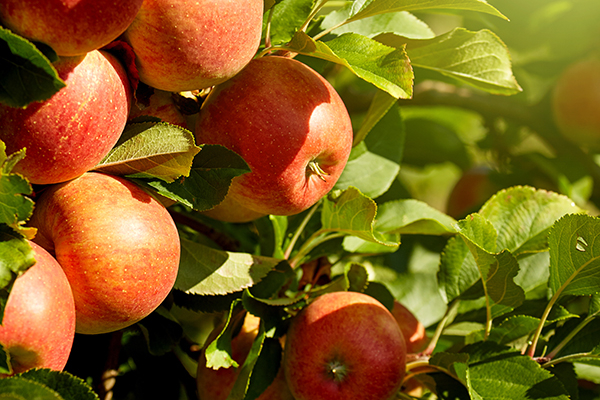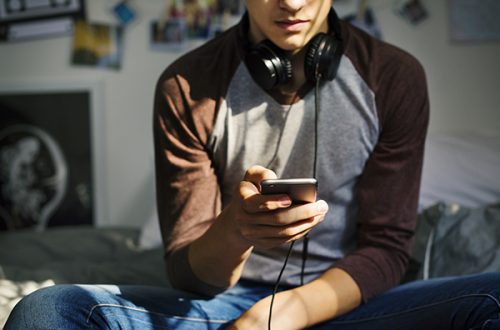

By Lisa Catterall

The environment and the economy are really both two sides of the same coin. If we cannot sustain the environment we cannot sustain ourselves. -Wangari Maathai
The time of year has come again when I feel pulled apart by my love of holiday patterns, papers, sparkles and wrappers, and my grief over the impact western lifestyles are having on the natural environment. I want to run out and buy more twinkling reindeer for my front lawn, beautiful wrap and bows that allow me to artistically show my love for people in my life, and of course, a cascade of toys to pour over my darling children. It’s my way.
In May, I take my students on a dream of an environmental science learning journey. We travel to a crystal-clear kelp forest full of the giant submarine animals that used to make homes everywhere along the California coast, and we kick along among redwood-tree sized stalks of kelp shot with rays of sun and dotted with bright orange and iridescent blue fish. We go out in the dark and play with tiny creatures so biodiverse that they look like brightly lit rainbow bubbles swirling around our hands and fins.
Kelp forests are not like this anywhere else in our state, right now, and they are just coming back to Catalina Island, where my students and I make our home that week in May. Several years ago, a container ship spilled a load of hijiki, a seaweed native to Japan and that is a great delicacy there. Ironically it looks quite a lot like a dollhouse-size giant kelp, with tiny bladders and long lovely blades. But it carries small saws. It wraps itself around the roots of our giant kelp (called the holdfast), and saws through the stalk until the kelp floats up, dead, and washes onto shore strangled by the tiny invader. It’s been a heartbreaking trip for several years thanks to this plant, transplanted by luxury consumption.
This year we went in September. My tenth grade students go, but this year my eleventh and twelfth graders had missed the trip thanks to the pandemic. Last year one of them looked me in the face and said, “nothing we’ve been promised has really happened, Lisa. So we don’t really believe that this will happen.”
That was it for me. It didn’t matter that the science center we usually stay at was still closed, or that there was no one available anywhere on the island to help us with anything, or that the channel was littered with anchored container ships. We were going to do the trip, and we were going to do it better than ever. Those kids were going to see an unfettered California kelp forest. I booked tent cabins and went shopping.
In the produce section of our local grocery warehouse, I had my hand on a hard-plastic blister package of Fuji apples. It looked like one of those packages of single pills, only the single containers were huge, and had apples you could pop out. I was excited to find something that could make it through the baggage compartment of an airplane, across the Long Beach channel on a ferry boat, and up to camp on a gear haul and still taste fresh and good. But I was horrified about the plastic.
It was thick, clear and rigid. Plastic is no longer recycled; anything saved for recycling sits at port or ends up dumped outright into the ocean in Indonesia. Recycling plastic is such a toxic process that we’ve never recycled plastic on U.S. soil, we’ve sent it to China. China has stopped taking it. Even when it was recycled by China, it was usually turned into a sand-like plastic feedstock that was too toxic to recreate into a consumer product the U.S. would allow back in. If you’ve ever seen very cheap plastic toys that degrade easily at a market in Asia or Africa, you’re probably seeing your old recycled plastic bottles.
This pack of apples I was looking at in its plastic ball-like packaging would never go away, or at least, not in any way I could see. I couldn’t buy it. I could not take my students out to live in view of an intact underwater ecosystem for a week and model carelessness about the very thing that is keeping that ecosystem threatened. I could not display unthinking consumption while leading a program designed to make people think.
When it comes to members of Western society doing their part to save the environment, there is an enormous iceberg of processes working below the surface. At the tip, the part we see every day, there is something I call “greenwashing.” As consumers, we are constantly shown products that are “green.” When we follow the thread of the lifecycle of most of these products from raw materials extraction to end-of-life, they are anything but green.
That wonderful new organic cotton T-shirt that says “Be Nice to Your Mother” with a picture of the planet? That cotton took 600 gallons of water to grow! That “bamboo plastic” toy you’ve been eyeing at the local health food grocer? That’s a composite material of bamboo fibers and plastic. Just like polyoxybenzylmethylenglycolanhydride (Bakelite), which never gave a nod to bamboo, but has the same matrix and will most likely take the same amount of time to “go away” when humans are done with it. How about compostable paper plates? They only break down if they get hot; if they make it to a landfill or to the ocean, they stay, just like plastic. The truth is, we just should not be buying very many new things. At all.
This is no fun. Certainly not at this time of year when we feel fulfilled by consumption in a way that speaks to our empathy, family, history, and even our spirituality. But we are in a pull system; when we buy something new, we pull towards another one being created. The honest truth is that there are simply enough human-made things, in fact, there are far too many things already on Earth.
Back to the iceberg of our circumstances as modern consumers. The visible part is this “greenwashing.” Underneath the visible part of the iceberg where we see “green” products everywhere, there are three layers of truth that humans need to see in order to become part of the solution. The first layer is microdecisions, the ones we make every hour of every day. “Don’t buy those plastic packaged apples, Lisa” is a good example. The second layer is political activism. We need to understand the laws that allow those apples to come in that packaging with no regard for what happens next, and we need to be empowered to raise our voice, use our vote, and do something about it. The foundation, or the base of all this, is the science that provides the call to act. How do we know the apple container has an effect on our kelp forest? How do we know something is amiss in those kelp forests in the first place?
It is critical that every student understands how scientific tools and processes give us facts. Many voters and citizens of our country are wandering around with no understanding of the scientific process, and it’s much, much easier to believe fake information that allows you to purchase that blister pack of apples, that cheap toy, that new tee, etc. without a thought for the consequences. In the re-education that is needed in America and other Western societies around eliminating our harmful environmental impacts, the roots are science, the shoot is an active and engaged political life, and the flower is making good decisions every moment of every day.
I bought the apples. I was more concerned about making sure we learned the roots that week. But I did not throw the blister pack in the trash. I carried the empty plastic package all the way down from our campsites, across the ocean, up into the sky, back to school, and had my fifth grade engineering class turn every apple blister ball into a permanent prop for their dance and theatre program (they are doing a dance with spinning balls on strings; the balls were the apple package).
In Nigeria once, someone proudly presented me with a white plastic chair that had been wired together and repaired multiple times. In the U.S., we purchase those chairs for five dollars and throw them away as soon as they have a problem. In Accra, Ghana, there is a huge market place called the “bruni wawuo” which translates to “dead white people,” because they can’t understand why any human would throw away such good items while they are still alive. It’s filled with exactly that, trash thrown away in America and Europe. Even on Catalina Island, some of our students visit a camp that has a workshop dedicated wholly to reworking and remaking broken items that might usually be thrown away.
This holiday season, I have a new commitment to making absolutely sure that I remember that any piece of plastic I buy is purchased with the knowledge that I am bringing something permanent into this world that will not go away. Anything that is presented as a new type of luxury item or food is something I will question; how did this get here? Is the process safe? Or might it spill and eat all the kelp?
I’m going to make the time to visit local open markets where artisans sell things they have made from wood or repurposed materials, with no packaging at all. I’m going to take the extra step of finding reusable fabric to cover secret presents. I’m going to be fastidious about repairing and elevating the decorations I already have. I’m going to make new things with my children out of things we find discarded or blowing away on our walks, and I’m going to procure wonderful reused and repurposed things to discover under the tree. I’ll call upon our local farmers for treats and gifts. I will find the spiritual fulfillment of abundance, light, and plenty in the memory of sun-drenched, untouched Kelp forests coming back to full growth for the next generation to feast upon with their eyes. The “feast” is not going to come from the grocery store, but from what is outside, all around us, hoping we will notice it, begging us to protect it by doing the right thing every day. Even during the holidays.


You May Also Like

November Contest Winners
December 1, 2021
Tech Gifts
December 1, 2021

